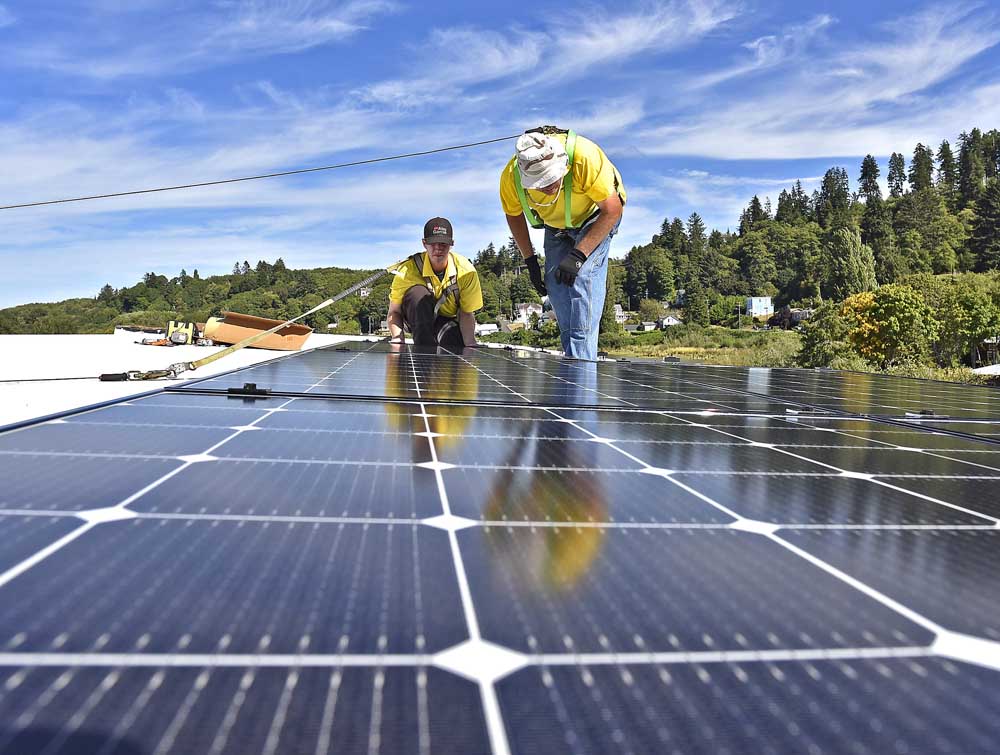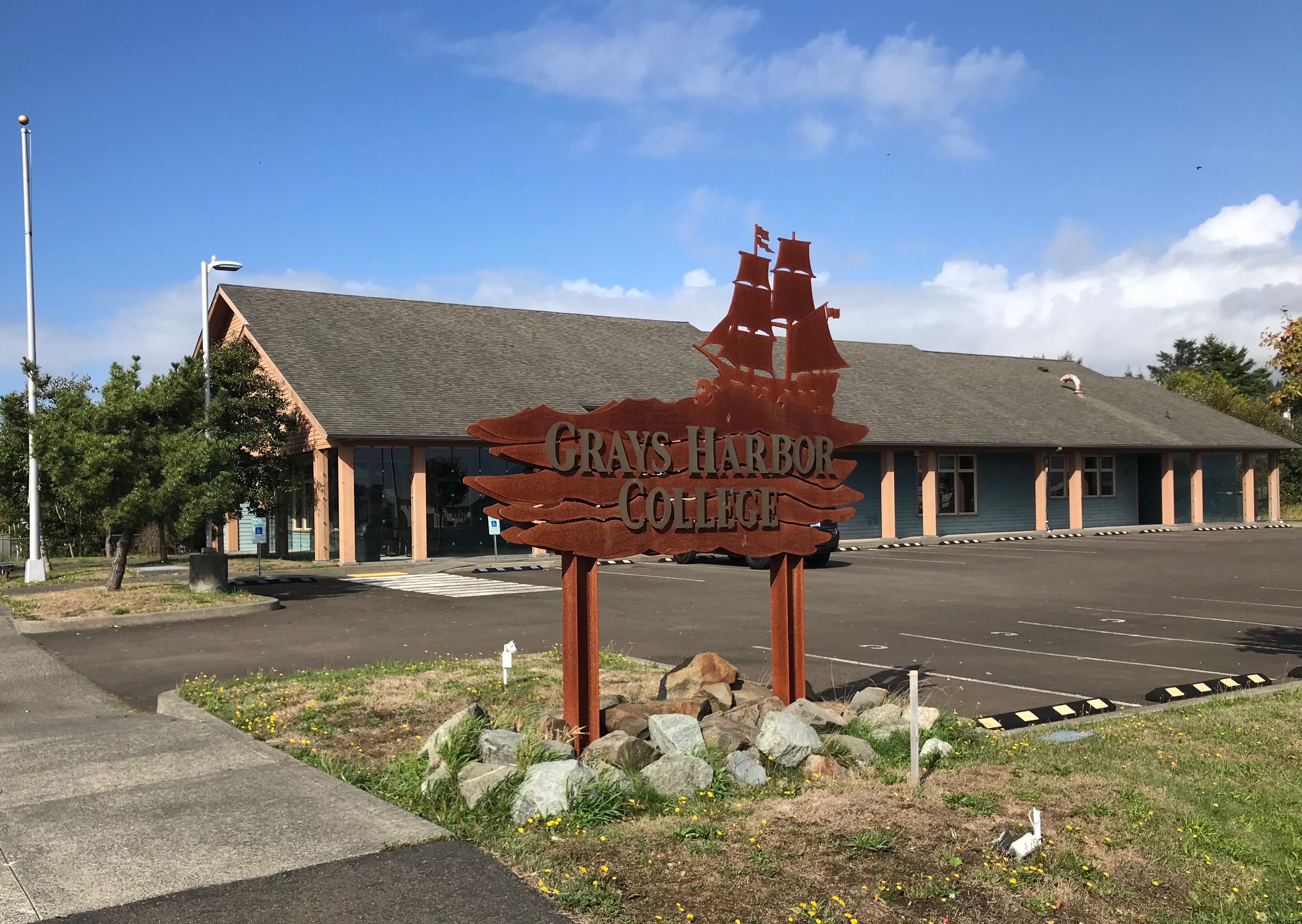Solar power gain converts in rainy Pacific County
Published 5:50 am Thursday, October 5, 2017

- Eddie Phillips, left, and Chuck Waddell, right, installed the last few panels of a new solar array on the roof of Alderbrook Station in Astoria in late August.
Based on this year’s sunny fall weather alone, few would question the decision to begin installing solar panels on the roofs of a Long Beach home in late September or of Astoria’s historic Alderbrook Station at the end of August.
Workers sweat in the glare of the sun. Although 2017’s driest days are behind us, truly rainy days have been rare for months. For much of the year, however, there’s no denying this is a cloudy area.
Stan Tussing, owner of Precision Heating & Indoor Air Quality in Warrenton, is a “one man band,” singing the praises of solar energy. In addition to heating and cooling systems, Stan Tussing, owner of Precision Heating & Indoor Air Quality in Warrenton, installs solar panels in both Lower Columbia counties.
Jason Dunsmoor, chief of engineering operations for the Pacific County Public Utility District, estimated that more than half of the 27 customers here who have solar power on their accounts signed on in the last two years because they feared certain incentive programs were going to expire.
The Washington State Legislature, however, recently passed a bill to replace an old incentives program with a new one effective through 2029. Details on the program, which began Oct. 1, can be found at tinyurl.com/WA-solar-incentives. Owners of single-family dwellings who participate can each receive up to $5,000 a year back on their electric bill.
In Clatsop County, 43 Pacific Power customers have solar power, for a total capacity of 325 kilowatts — far more than when Daren Doss, the architect and owner of Alderbrook Station, first approached the power company about solar in Astoria 10 years ago.
City Planner Nancy Ferber said the city sees few applications for solar panel installation — Buoy Beer Co.’s plan to install panels is one recent, large-scale project. This may have to do with the fact that some people are installing smaller arrays and may not think to contact the city, but others say it is a matter of perception.
“Solar doesn’t work around here: too cloudy, too rainy,” Tussing said, paraphrasing an opinion he often hears.
“I used to think that myself, and I was wrong,” he added. “It works very well here.”
Tussing and his crew spent the last days of August installing 34 panels on Alderbrook Station’s white roof. The installation and wiring went smoothly and Doss is just waiting on a few final items to make the setup compatible with older features of the building’s power supply. He hopes the 11.2 kilowatt system will handle much of the power for the building.
In his role as an architect, he had helped clients get set up with solar power and had long wanted to do it for himself. “But I always thought it was out of reach,” he said.
Then, as he watched more and more state and federal tax incentives dry up or expire, he decided to take the leap and install panels this year while he still could take advantage of some of the programs available.
The panels installed on Doss’ building are positioned so as to not impact the overall appearance of the building — an important point to Doss and city staff who reviewed his application. He is also using a special kind of solar panel, designed to take advantage of any light reflecting back off of Alderbrook Station’s white roof. With this design, Doss is getting some degree of solar power even in the middle of one of our area’s frequent cloudy days. It is likely he could surpass the 11.2 kilowatt mark, even in less-than-ideal weather, he said.
Tussing, a Clatsop County native who graduated from Knappa High School, is a solar convert now, but he, too, first installed solar panels on his own home purely because of the incentives available at the time. He remembers when he finished installing the panels, hit the switch and went to his power meter to see what, if any, changes occurred.
In his telling, he stood there, watching the meter. It wasn’t even slowing down.
“Oh, well,” he thought. Then he looked back at the meter. It stopped. Then it started going in reverse.
“And I’ll tell you, when that meter started going backwards, it was like a lightbulb went on,” Tussing said.
With incentives disappearing in Oregon, Tussing fears solar installations could be a harder sell on the south side of the Columbia. But he has faith in the evolving nature of the technology and believes that battery innovations, power or energy storage are the future of solar.





